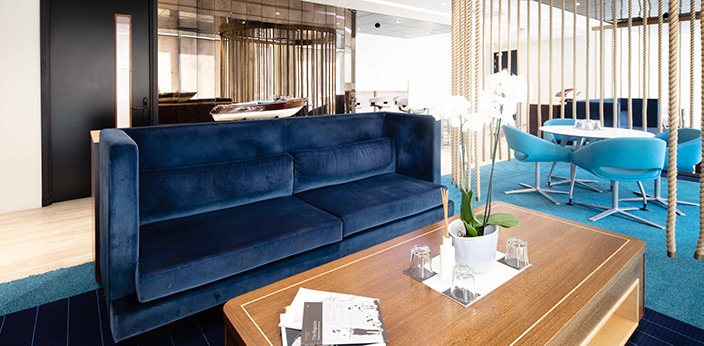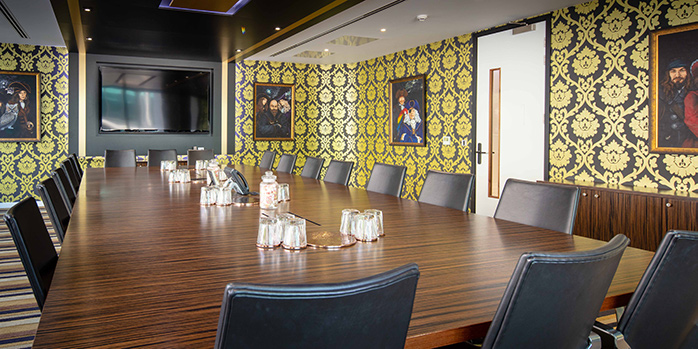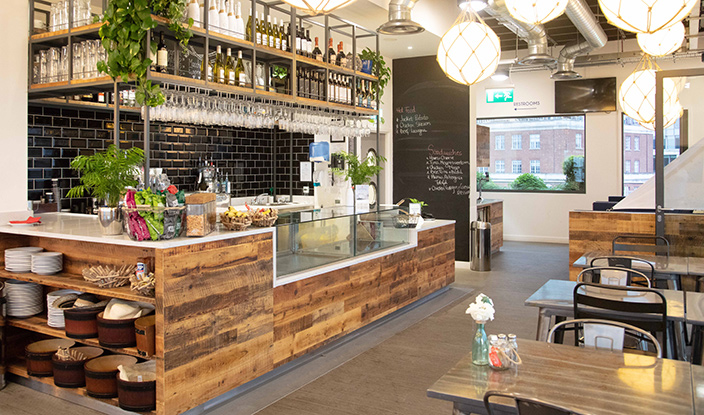Demystifying Different Ways Of Working
– And What They Mean For FMs
 Everyone knows that the pandemic has ushered in a new era of flexible working, in which businesses can no longer count on their employees being in the office all day, every day of the week. Here, Giles Fuchs, CEO of Office Space in Town, outlines some of the more popular and innovative post-pandemic work strategies, and discusses their significance for facilities managers.
Everyone knows that the pandemic has ushered in a new era of flexible working, in which businesses can no longer count on their employees being in the office all day, every day of the week. Here, Giles Fuchs, CEO of Office Space in Town, outlines some of the more popular and innovative post-pandemic work strategies, and discusses their significance for facilities managers.
Seesawing Government guidance on whether workers should return to the office has been mirrored by the mixed responses of businesses in recent months. Some business leaders supported the return of work-from-home advice in December, for instance, while others branded it “absurd”.1 Amid this ongoing uncertainty, debates over new styles and settings of work have rumbled on, seemingly without resolution.
The intractability of these debates has been exacerbated by a lack of understanding around what these different approaches, such as “hybrid working” or “activity-based working”, actually entail. As businesses look to pivot their approach to their workspace post-pandemic, facilities managers must know the difference between the various new work strategies, so that they can successfully, well, facilitate them.
Hybrid Working

Surely the most familiar work strategy to have been popularised by the pandemic, hybrid working now seems ubiquitous, with more than 40% of employers planning to adopt this approach by 2023.2
But while the concept is relatively simple, managing a space for newly hybrid workers is not necessarily straightforward, as many facilities managers have already found. Hybrid working has played havoc with office routines, with occupancy peaks and troughs far more polarised and having a steady stream of workers throughout the week seemingly a thing of the past.
Facilities managers must combat this unpredictability by drawing on insights from data to ensure that offices use their resources most efficiently. Using motion sensors to track occupancy over time, will enable FMs to map where energy is most needed for the likes of lighting, heating, and air conditioning – and where savings can be made.
Furthermore, AI-equipped facilities management systems will be able to learn from past patterns and apportion energy accordingly, reducing wastage in areas where footfall may be lower at certain times. This will be particularly critical in multi-occupancy offices where energy provision falls under the remit of a centralised facilities management team.
Some of these developments may seem futuristic, but with sustainability now a central concern for all businesses, supporting energy-efficient hybrid working will be a key skill for facilities managers to adopt in the immediate post-pandemic years.
Activity-Based Working

Hybrid working is often conflated with “flexible working”, but the two do not always align. Working with remote colleagues means that office-based employees need access to high-spec videoconferencing facilities that can support effective collaboration. Without them, workers are denied the real flexibility that theoretically comes with choosing where they work.
One solution to this has been the advent of activity-based working, a workstyle in which employees can choose from a range of settings according to what they are doing at a particular time. Of course, this brings its own challenges, occupiers’ appetite for efficiency and convenience necessitating the provision of several different types of space under one roof.
For facilities managers, this means ensuring that the aforementioned videoconferencing solutions are in place, but also that amenities such as breakout areas, entertaining spaces, and recording studios are available, to accommodate a broad range of activities including team brainstorms, client meetings, and even podcast production! All these are increasingly expected as standard by businesses of various sizes and sectors.
“SEMOB” Working

Hopefully the developments detailed above highlight how reductive it is to think about the office as merely a work “space”. Facilities managers must also deliver the services that occupiers require of their spaces.
Service-Enhanced Multi-Occupancy Buildings take this principle to the next level, offering facilities that recognise occupiers not only as workers, but also as people. At OSiT’s Monument office, for instance, we have an onsite hair and nail stylist who provides services on both a drop-in and an appointment basis. Such is the demand for their services that they are a full-time fixture at OSiT Monument!
While it may sound frivolous for workers to have their hair and/or nails done in the office, this is all part of the office’s evolution to something that is much more than just a workspace. People travel into city centres for more than just work, so offices that cater to all of these priorities will be more popular with both employees and businesses. In the long term, occupiers will not settle for anything less.
All Things To All People?
Of course, the diversification in what the office has to offer will broaden the remit of facilities managers far beyond its traditional boundaries. But with the office industry facing a fight to get footfall back up in the wake of the pandemic, the most successful facilities managers will be those who embrace these new responsibilities and make their spaces more marketable to prospective clients.
1: https://www.cityam.com/london-offices-at-10-per-cent-occupancy-after-work-from-home-directive/
2: https://www.peoplemanagement.co.uk/news/articles/two-in-five-employers-will-embrace-hybrid-working-poll-finds#gref























































